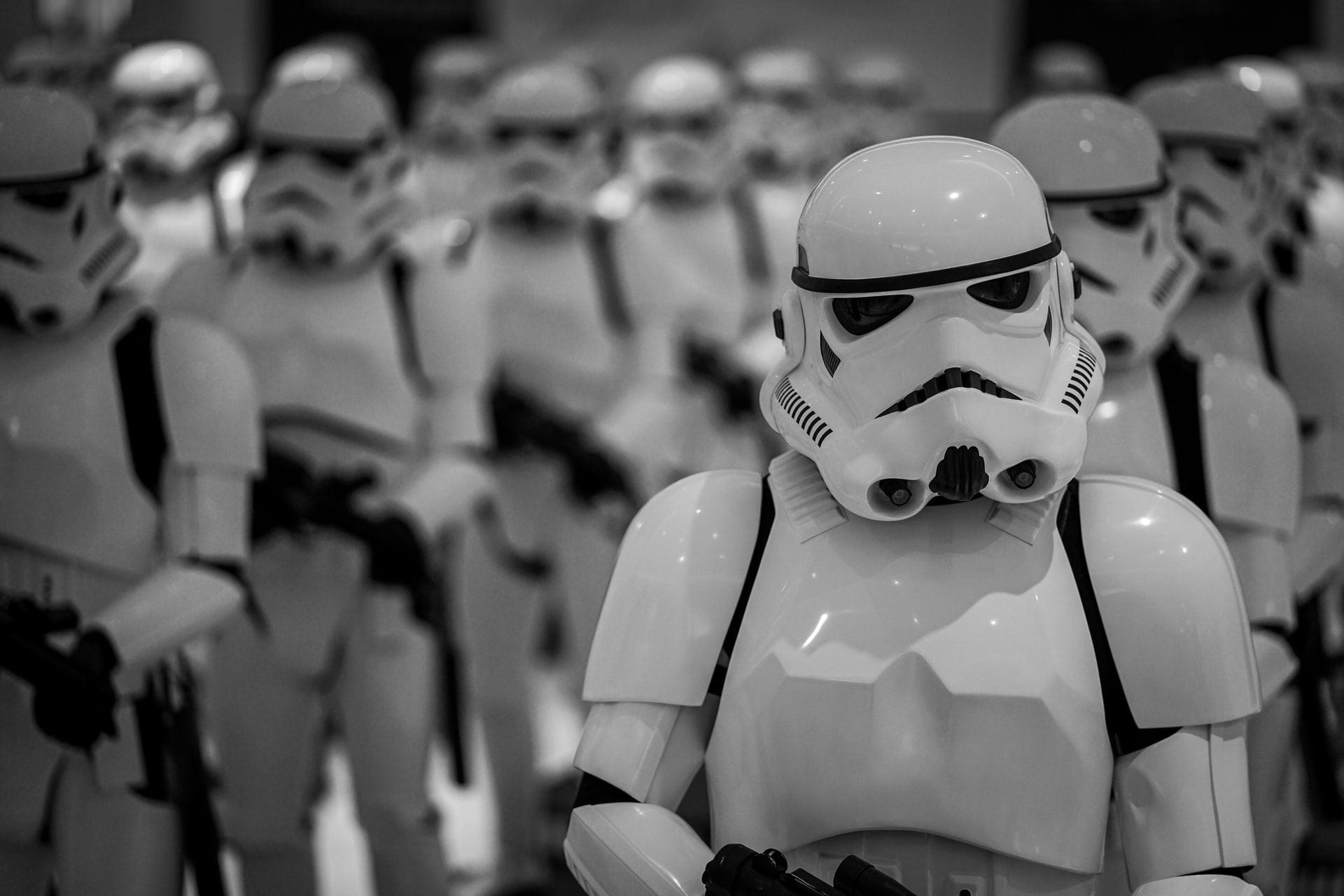Being the first science fiction film that was released to a mass audience, Star Wars creator Geroge Lucas initially believed the film would be a failure, escaping on vacation in Hawaii during its opening weekend to avoid the potential bad reception.
The reality could not be further from the truth. Despite releasing as a potential financial risk, Star Wars was met with runaway success. It sold out theatres nationwide and broke box office records, even replacing Steven Spielberg’s Jaws as the highest-earning film in North America. Re-released in 1981 with the subtitles Episode IV – A New Hope, it marked the beginning of the original trilogy and the start of a pop culture phenomenon. Its sequel, Episode V – The Empire Strikes Back, was followed up in 1980, with the trilogy rounded off in 1983 by Episode VI – Return of the Jedi.
Fast forward to the present, Star Wars is now a multimedia franchise divided into different sagas due to its several prequels, sequels and spin-offs. Ignoring the fact that even its creator failed to foresee the film’s success at the time, here are some reasons for Star Wars’ immense popularity.
Visual Effects & Sound Design
Critics praised the original trilogy at the time for its immersive storytelling style, with many considering its visual effects and sound design to be groundbreaking and way ahead of its time.
Much of this success can be credited to George Lucas, who was determined to bring his ideas of aliens and spaceships to life despite the technological obstacles in the late 1970s. Together with visual effects company Industrial Light and Magic (ILM), Lucas and his team pioneered a motion controlled camera system to create the film’s renowned dogfights and intricate starship maneuvers. During filming of the subsequent prequel trilogy, Lucas revolutionized the use of digital video when film reels were still the norm. Fully computer generated main characters were also employed by Lucas in favour of puppets or animatronics, which represented the peak of digital technology at the time.
However, technological advancements were not the only factor that set Star Wars apart from its peers. While other science fiction movies at the time such as 2001: A Space Odyssey or Star Trek portrayed sophisticated and grandiose futurism, Star Wars depicted the opposite. Spaceships were half working, alien worlds were weathered and lived-in. Although this was a drastic shift in science fiction aesthetic, this gritty look resulted in its characters and objects becoming more realistic and relatable to audiences.
Last but not least, Star Wars would not be complete without its distinct sound design.
Possibly one of the biggest challenges Lucas faced was bringing the infamous Sith Lord Darth Vader to life. The actor who portrayed Vader at the time, David Prowse, had difficulty delivering his lines due to his helmet and thick accent. Filmmakers often prefer to use a professional male voice over artist for pivotal roles like this rather than relying on the actor’s own voice. Fortunately, Lucas’ search led him to James Earl Jones, whose deep resonant voice made him a straightforward choice for the role. Dubbing Prowse’s voice in post production, Jones’ work would later be recognized as one of the most iconic vocal performances in film history.
Other fan favourite sounds from the films include Chewbacca’s roar, which were recorded from bears, walruses and several other animals. Lightsaber and blaster shots sound effects were sampled from old projectors and radio tower cables respectively. However, the most influential impact arguably came from composer John Williams, who is widely recognized as the man who defined the entire franchise’s musical score. Over the forty two years spanning the entire saga, Williams was paramount in producing the soundtrack that would aid the narrative and visuals of the story.
Storyline
Few films have the ability to successfully cross multiple genres; Star Wars manages to blend action, comedy, fantasy and even romance while staying true to its science fiction roots. It is then perhaps no secret that Star Wars pays homage to several classic films, most notably the 1958 Samurai classic The Hidden Fortress. Heavily inspired by the fact that the story was told from the perspective of two humble characters, George Lucas decided to replicate the same storyline using two lowly droids: C-3PO and R2-D2.
Similarly in both movies, the plot largely consists of a princess leading a gang of rebels in defeating an evil empire. Resemblance can also be drawn between the Samurai sword fights and the Jedi lightsaber duels in their respective movies. In fact, much of Darth Vader’s appearance can be traced back to Date Masamune, one of the most feared and notorious warlords in Japanese history.
Its list of influences does not stop there. Tatooine, the harsh desert homeworld of Luke and Anakin Skywalker, was derived from the American western. The Galactic Empire, the main antagonistic faction in the original trilogy, draws several World War II parallels. Ultimately, one of Star Wars’ greatest reasons behind its strong storyline is its competency in taking tried and tested old ideas and presenting them in a fresh manner. Its overarching storyline of the struggle between good and evil across all nine films also easily appeals to fans of all ages and backgrounds.
Today, Star Wars continues to see a multitude of new comics, novels, video games and even parodies that build and expand upon the original story. Star Wars’ success and popularity lies not only in its films, but in its ability to allow its universe to expand and live beyond the movie screens.
